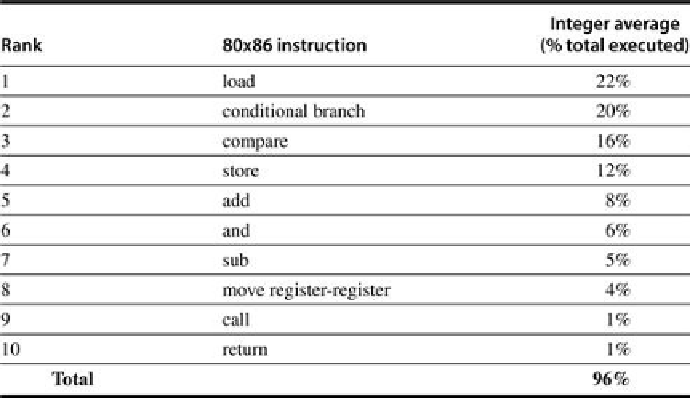Hardware Reference
In-Depth Information
FIGURE A.13
The top 10 instructions for the 80×86
. Simple instructions dominate this list
and are responsible for 96% of the instructions executed. These percentages are the average
of the five SPECint92 programs.
As mentioned before, the instructions in
Figure A.13
are found in every computer for every
application--desktop, server, embedded--with the variations of operations in
Figure A.12
largely depending on which data types that the instruction set includes.
A.6 Instructions for Control Flow
Because the measurements of branch and jump behavior are fairly independent of other meas-
urements and applications, we now examine the use of control flow instructions, which have
litle in common with the operations of the previous sections.
There is no consistent terminology for instructions that change the flow of control. In the
is they were typically called
transfers
. Beginning in 1960 the name
branch
began to be used.
Later, computers introduced additional names. Throughout this topic we will use
jump
when
the change in control is unconditional and
branch
when the change is conditional.
We can distinguish four different types of control flow change:
■ Conditional branches
■ Jumps
■ Procedure calls
■ Procedure returns
We want to know the relative frequency of these events, as each event is different, may use
different instructions, and may have different behavior.
Figure A.14
shows the frequencies of
these control flow instructions for a load-store computer running our benchmarks.

Search WWH ::

Custom Search